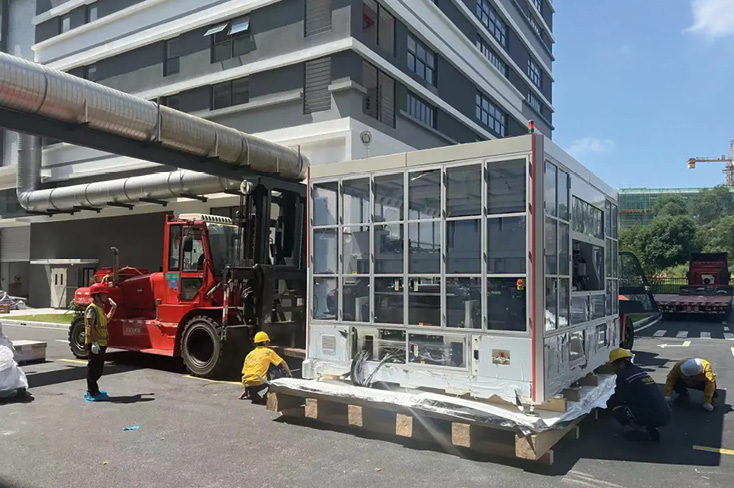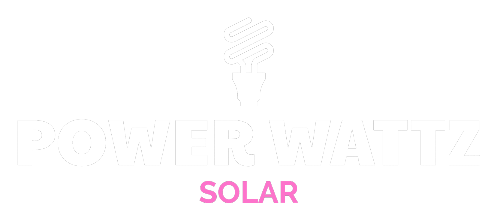
In 2025, the solar manufacturing industry is struggling to emerge from almost two years of major oversupply, that has seen prices for PV modules fall and remain well below production cost for many suppliers. Energy storage manufacturing has been going through a similar adjustment over the past couple of years, though the market is now showing signs of renewed growth as electric vehicle demand develops.
These tough conditions leave few manufacturers in a position to consider expansions or new production lines, in turn, creating a challenging market for factory equipment suppliers. Wuxi Lead Intelligent Equipment Co. Ltd. (Lead) supplies equipment to both industries. The company has found opportunities to do business despite the recent downturn and says that its outlook for both solar and energy storage manufacturing is strong, with many new technologies to introduce to the market, and a lot of room for expansion.
“As an equipment company, our core advantage lies in deep collaboration with global leading customers, focusing on their demand for high-quality and efficient high-end capacity upgrades,” Wang Yanqing, Lead Intelligent’s Chairman, told pv magazine.
PV innovation
On the solar side, Wang sees the current market situation as resulting from the desire of some manufacturers to rapidly introduce the latest technologies at scale, while others cling to existing production lines. “Lead has always believed that the so-called overcapacity is structural, mainly due to the disorderly expansion of low-end capacity and the mismatch with the iteration of high-end technology,” he said.
Lead has sided firmly with the former, looking to remain at the forefront of PV technology. Wang stated that he sees new technology and equipment upgrades as “precisely the driving force for the industry’s survival of the fittest.”
By betting early on back-contact (BC) cell technology, for example, the company has secured more than 30 GW of orders. And it expects big things for this technology, “BC technology has entered a period of accelerated industrialization, and the emergence of GW-level BC component procurement sections in 2025 in China is an important signal. We believe that in the next three to five years, BC technology will become one of the mainstream routes in the n-type technology era,” said Wang, further noting that among other advantages, BC cells have surpassed 27% efficiency in research settings, and that production line efficiencies are also rapidly increasing.
One thing that previously held BC technology back from mainstream manufacturing was the complexity and cost of running the processes involved at scale. “These challenges are precisely opportunities for a company like Lead Intelligent,” said Wang. In March 2025, Lead announced it had received an order for a BC production line including screen printing, cell stringing and related equipment. Key among its innovations with this line, the company reported, is a “novel welding technology” that promises a 50% reduction in energy consumption compared to typical infrared processes, as well as a solution to the issue of cell warping that’s common to BC’s single-side processing.
Wang said that Lead has also provided atomic layer deposition equipment for BC cell manufacturers and developed a stringer tool for cell interconnection able to process up to 6,800 pieces per hour. The stringer can process cell formats from 156mm to 230mm, and interconnection layouts featuring anywhere from five to 24 busbars.
Lead is also aiming to be an early mover in developing equipment for perovskite cell production and says it can already supply full production lines at gigawatt scale, having established partnerships with industry leaders to develop processes for large area coating, laser scribing and more. In February 2025, the company delivered a 100 MW production line for perovskite solar cells to a client in China, based on an in-house developed slot-die coating process to deposit the perovskite itself and other cell layers.
The tool, which Lead says is among the first pilot lines for perovskite cell production at this scale, also features various innovations developed in-house at Lead, including gantry dual-drive, air isolation, and a high-precision feeding system. “This machine allows for fast coating while ensuring the uniformity of large-area coating and providing a comprehensive platform isolation environment, ensuring the stability of the coating process. The coating speed exceeds 50mm/s, providing efficient and reliable production for our clients,” said Wang.
Alongside the introduction of new technologies, improvement, optimization and cost reduction of existing processes and materials are expected to remain key trends for the PV manufacturing sector. Given that increased silver consumption is one consequence of the industry’s switch to n-type cells, Wang said he expects renewed focus toward reducing reliance on the precious metal. He said that zero busbar (0BB) interconnection is a growing trend among manufacturers. “Removing the main grid silver electrode and directly connecting the ribbon to the fine grid not only increases power by reducing obscured cell area, it also reduces silver consumption,” he explained. “Lead’s 0BB solution has the advantages of high precision, high stability and low cost.”
Wang said that Lead’s 0BB screen printing process is accurate down to 0.02 mm and features a bottom plate curing method that enables uniform temperature across the cell, ensuring no exposure to potentially damaging levels of heat during production. The process promises a 30% reduction in the cost of silver paste and adhesives.

Image: Lead Intelligent
Battery equipment
Lead Intelligent is also among the world’s largest equipment suppliers to the lithium-ion battery manufacturing industry. Here, Wang sees a market emerging from an adjustment period, and major manufacturers beginning to plan expansions again as electric vehicle adoption increases.
The company announced several partnerships on the battery equipment side in the first half of 2025, including supplying upgraded cutting and stacking equipment to a leading South Korean battery manufacturer. Another agreement is to supply end-of-line tools for electrolyte filling, formation and final inspection to Italian company Faam for its 8 GWh extension to its existing battery plant in southern Italy.
Via its subsidiary Zhuhai Titans New Power Electronics Co., Ltd, Lead also supplied equipment for the activation, performance testing and sorting of batteries to a well-known European automobile manufacturer. Since this stage in the process requires charging and discharging of the batteries, it can be highly energy intensive. Lead estimates that it accounts for around 40% of overall energy consumption on a battery production line. In this case, the client was concerned about energy costs, and placed high expectation on the system’s energy efficiency.
These requirements pushed Lead to integrate multiple new ideas into the system, including an integrated cabinet layout that reduced cable length by more than 40%, equipment footprint by 30% and installation time by more than 30%, alongside what it called a “substantial reduction in energy consumption”.
With a proprietary system to precisely control temperature at each point within a battery chamber, it was able to achieve further reductions in energy consumption, as well as promising improved battery consistency to the manufacturer. By implementing negative pressure sealing it was also able to eliminate the need for a cleanroom in the formation stage, reducing both initial investment and operational costs. In January 2025, Lead reported that following six months in pilot production the line achieves a 25% reduction in energy consumption compared to other solutions on the market.
The company also sees opportunities in driving new battery technologies to large-scale production, with their current focus on solid-state batteries. These are widely viewed as a chance for a major step forward in battery capacity, performance, and safety, but have been held back from large-scale manufacturing by various challenges including the handling of lithium metal used for the electrode.
Wang pointed out that in 2024, Lead introduced a complete set of processes for solid-state battery production, including positive and negative electrode, electrolyte, lithium metal electrode, copper-lithium composite film, atomic layer deposition coating, stacking, and densification of battery cells, assembly, and capacity grading.
He said that the company can now supply equipment for all of these processes at GWh scale, and has already shipped equipment to overseas customers, including a solid-state dry electrode coating tool supplied to a South Korean customer. “This equipment not only features continuous electrode coating, dual-sided simultaneous lamination, and high production efficiency, but also incorporates Lead’s industry-leading temperature uniformity system, offering superior rigidity and excellent thermal uniformity,” the company stated when announcing the deal in November 2024.
In March 2025 at the Interbattery Expo in Seoul, Lead showcased an assembly line for Blade batteries, a concept developed by manufacturing giant BYD that promises improved space utilization, within an electric vehicle for example, and reduced fire risk compared to mainstream battery designs. Wang said that Lead’s blade battery line achieves a 98.5% yield rate. He further noted that large cylindrical cells and sodium-ion batteries also present interesting routes to improvement in battery technology.

Image: Lead Intelligent
Global plans
Though Lead’s business has been focused on customers in China for much of its 25-year existence, today it is supporting many with their international ambitions, as well as customers outside China keen to meet demand for locally made PV modules and batteries.
Wang said that in 2024, more than 45% of the company’s orders were for overseas factories, and this has helped it to maintain its order books even as oversupply slowed domestic capacity additions. Lead currently exports to more than 20 countries besides China and has 18 overseas subsidiaries. “Traditional developed regions such as Europe and the United States have always been the most important markets in the new energy industry. Europe is where our overseas business is concentrated,” said Wang.
In October 2022, the company established its overseas business headquarters in Germany with the acquisition of European equipment manufacturer Ontec, and in February 2024, officially opened its first European logistics center. Wang said the company also sees rapid growth in other regions including Southeast Asia, the Middle East, and Mexico. Most recently, he said, it has set up branches in Malaysia, Singapore, Vietnam and Turkey.
The company sees this local presence in growing markets as key to managing the current global environment of trade barriers and other geopolitical risks. “The global new energy equipment industry will face a new landscape of green economy dominance, accelerated technology iteration, and regional market differentiation”, said Wang. “Lead will continue to maintain its technological leadership, agility, and global development strategies, and adapt to the uncertainties of the global economy.”
This content is protected by copyright and may not be reused. If you want to cooperate with us and would like to reuse some of our content, please contact: editors@pv-magazine.com.
Source link


